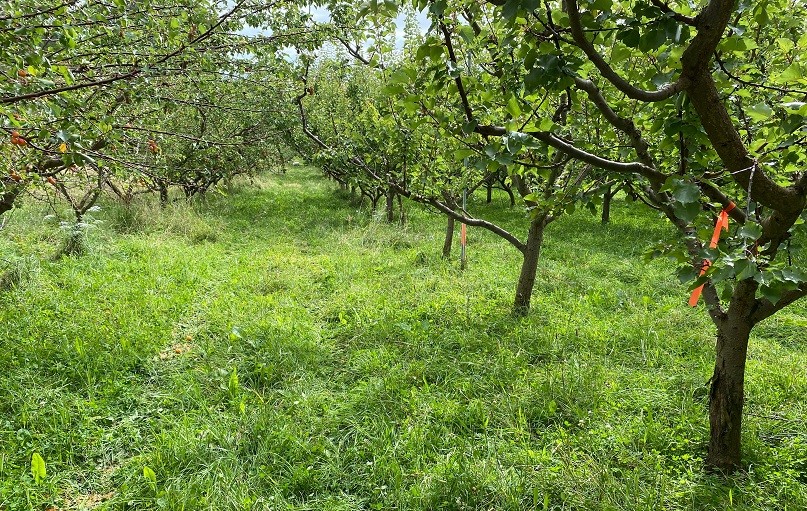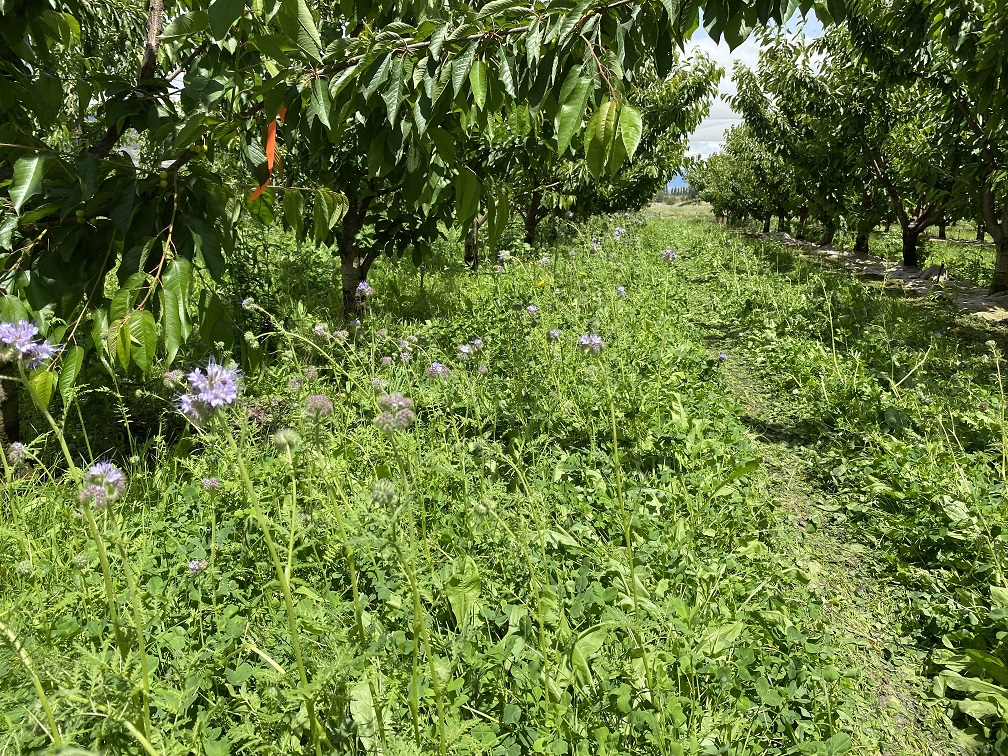First year results from the summerfruit understory project aiming to enhance orchard biodiversity has seen a higher abundance of beneficial insects and reduced herbicide sprays applied.
The Summerfruit New Zealand-A Lighter Touch project has established understory plantings in two Central Otago stonefruit orchards initially, with one further understory planted in Central Otago in the past autumn, and another planned for Hawkes Bay in spring.
The project aims to understand how to integrate understory plantings into summerfruit orchard systems to see whether benefits can be demonstrated, such as less mowing, reduced herbicide applications, improvements in soil health, and enhanced natural enemy populations resulting in reductions to pest pressure.
Kate Colhoun, of Plant and Food Research in Clyde, monitored the understory planting at a cherry orchard in Cromwell, planted in spring of 2023, and an apricot orchard in Roxburgh planted in autumn 2023. In her report she found the understory plantings at both sites established successfully, showing lush growth and a high percentage of the plants in the seed mix establishing well.

The understory in the apricot orchard in Roxburgh in February 2024.
Monitoring showed greater diversity of flowers in the orchard due to the understory planting, and this resulted in higher numbers of insects in the understory blocks than in other parts of the orchard. The understory included plants such as phacelia, alyssum, coriander, clovers, and plantain which provide good quality nectar and pollen and are a valuable food source for the adult stages of many beneficial insects such as parasitoid wasps, hoverflies, and lacewings.
The lush growth of the plantings also provides a sheltered environment for the insects.
Over this first season of the project the growers involved significantly reduced the maintenance inputs such as mowing, and herbicide spraying required in the understory blocks, compared to the standard orchard practice.
On some occasions when insect sampling was carried out, there were higher numbers of thrips and aphids found in the understory plantings. However Kate says more detailed identification would need to be carried out to ascertain whether these are potential crop pests.
The project team is looking to include identification of insects at a species level as part of insect monitoring in the upcoming season. It was not included in the first season monitoring, as the focus was on establishing the understory and identifying whether the plantings did increase insect abundance.

The understory in the Cromwell cherry orchard in November 2023.
In the project’s first season, very few pest insects were collected from the orchard trees as opposed to the understory. The project team is discussing whether future monitoring should include direct inspections of the fruit crop to assess whether the increase in insect numbers in the understory plantings results in any increase in potential insect damage of fruit.
Findings from the full first season monitoring report will be shared with summerfruit growers at meetings in Central Otago and Hawkes Bay in October.